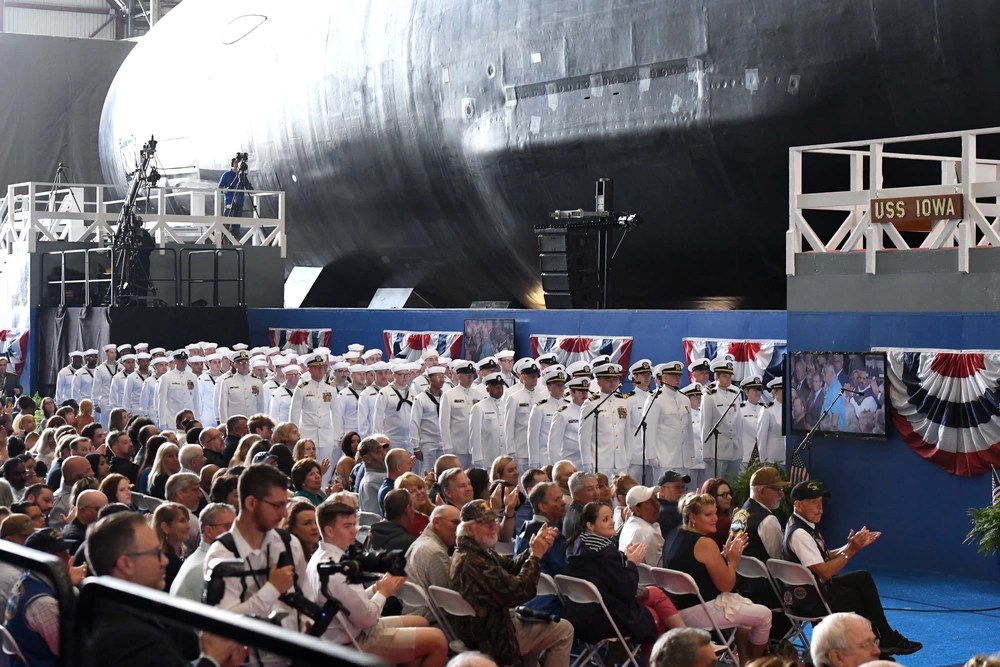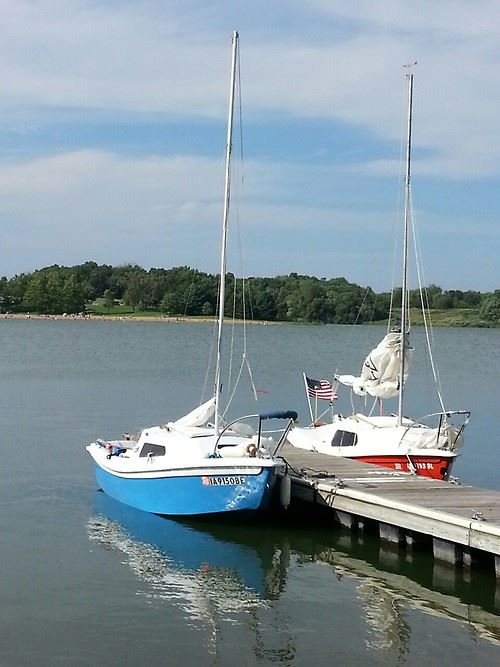
1-July-2023 #11
ENVIRONMENT
In an interesting tidbit of environmental news, during one of the myriad round-the-world sailing races, a boat teamed up with scientists testing water samples all over the globe, especially the Southern Seas around Antarctica. Sadly, each and every test tube of water showed microplastics. As mentioned in an earlier blog, Minnesota issued a warning about eating fish because of the “forever chemicals” and the plastics. Officials suggested that pregnant women simply not eat fish. They did not say anything about lobster tail, shrimp, or crab legs; thus, I feel no danger at Red Lobster while visiting my children in St. Paul.
Marine ecosystems include open ocean, deep-sea ocean, and coastal marine systems that are unique, different, and distinctive. Each class is split into biotic and abiotic organizations. Biotic is defined as living organisms such as animals and plants, while abiotic, as the name implies, is non-living constituents such as temperature, nutrients, and oxygen levels.
Sunlight, the fuel for life, is the most significant element to sea health and life especially for biotic existence. The Euphotic Zone, the depth between the surface and 200 meters (about 650 feet), requires substantial sunlight, and most living entities habituate in this zone. The Dysphotic Zone, running beneath the Euphotic region to about 1000 meters or 3200 feet, receives little sunlight but is adequate for minimal photosynthesis. The Aphotic Zone is the remainder of the deep sea. No sunlight enters this area.
Scientists arguably divide oceanic ecosystems into broad categories: Estuaries, Salt Marshes, Mangrove Forests, Coral Reefs, and Open Oceans. Estuaries are where the salty seawater meets rivers while Salt Marshes are where the ocean connects with land. Mangrove Forests are swampy areas full of Mangroves that unusually thrive on salt water that provides food for a large number of fish, animals, and plants. These forests are major protectors of land masses and food stations for 341 threatened species.
Coral Reefs, the most diverse marine ecological systems, feed over 25% of all water creatures. Coral polyps develop hardened exoskeletons that continue to grow over time. Coral Reefs are essential for sustaining oceanic temperatures, balancing acidification, and providing food for sundry biological entities. Oceans provide 50% of oxygen for the planet; therefore, the protection of coral reefs is really self-preservation.
The Open Ocean is fairly self-explanatory. The oceans are the home of whales, fish, dolphins, and the like. Open Oceans cover 70% of Earth and more than 25% of it is over 2 miles deep. Interestingly, only about 5% of the oceans have been explored.
COLLISIONS, ALLISIONS, and WRECKS
The Great Lakes are notorious for sudden gales that can sink large ships a la EDMUND FITZGERALD. NOAA is participating in marine archeology in the Thunder Bay National Marine Sanctuary which is home to clear and very cold water in which sunken ships maintain significant preservation. Of particular interest was the schooner barge, IRONTON, that went down in 1894 while being towed, with another empty vessel, by the steamer, CHARLES J. KERSHAW, that lost power and was about to be rammed by the trailing schooners. The skipper immediately severed connections with the two ships and watched helplessly as the IRONTON desperately attempted to get up steam and set sails. A nearby ship, OHIO, collided with IRONTON and sank rapidly but her 16-man crew were rescued.
IRONTON precipitously drifted away from the gathering of ships and started sinking. Her crew took to the lifeboats with the painter attached to the ship. IRONTON suddenly sank taking her crew to the bottom when they couldn’t cut the painter fast enough.
In their research in 2017, researchers easily found OHIO in 300 feet of water. NOAA’s Great Lakes Environmental Research Lab collaborating with the Oceans Exploration Trust’s oceanographers and cutting-edge technology including BEN, Bathymetric Explorer and Navigator, a 12-foot diesel-powered, autonomous vehicle with a high-resolution multibeam sonar, found IRONTON. She sits upright with her masts still standing complete with rigging looking for all the world as if she is sailing on the bottom. The sonar picture of the ship is astounding.

Note: the lifeboat is still attached


GRAY FLEET
The Navy finally tucked its tail between its legs and all the ill-fated LCS ships still above water will be culled within the next year. Doomed attempting to be technologically advanced in every facet of existence, the LCS ships simply could not interrelate all the sundry advanced systems. The LCS tried to be all things to all people for every possible mission or imagined duty. In the final analysis, it was a good idea…on paper. The USS SIOUX CITY, an LCS craft, is only 4 years old. It was built for around $500 million but repairs cost about $50 million annually.
USS SIOUX CITY

The USS IOWA (SSN-797) was christened on 17 July by Mrs. Christie Vilsack, wife of Agriculture Secretary, Tom Vilsack, at the General Dynamics Electric Boat headquarters and shipyard. I was invited but health issues kept me in Iowa; however, good friend and retired Captain Peter Welch attended as the first chairman of the Christening Committee. Vilsack noted him by name in her address prior to smashing a bottle of sparkling wine from Fireside Vineyard in Marengo, IA.


The happy lads of North Korea joyfully sent two ballistic missiles into Japanese waters aggravating oodles of people throughout Asia and the U.S. who promptly responded by having the USS MICHIGAN (SSGN-727) visit South Korea to remind their northern neighbor that if North Korea happens to accidentally land one of their flying weapons on an ally’s shore, retaliation will be imminent and nasty.

USS MICHIGAN
Meanwhile, the U.S. and sundry allies held a naval exercise that included the USS RONALD REAGAN (the poor guy couldn’t spell his name correctly), The cruisers ANTIETAM (CG-54) and ROBERT SMALLS (CG-62), a pair of US destroyers and support oilers, and ships from Japan, Canada, and France.
BIRD WALK: I had the great fortune to meet the then California Governor Ronald Reagan in Cedar Rapids, IA. I jokingly told him that he wasn’t spelling his name correctly. It is REGAN, not REAGAN! He quietly bent over and said, “Aw, heck, all of our ancestors were illiterate and no one knew how to spell our name.” His autographed photo is on my wall. FYI: it sits between autographed photos of Ted Kennedy and Bill Clinton. Hey, that first-in-the-nation caucus is good for something.
MERCHANT FLEET
An Iranian delta-winged attack drone hit the American tanker, PACIFIC ZIRCON, in the Gulf of Oman. The oil tanker is linked to an Israeli billionaire’s company. The ship sustained modest damage and no injuries; but the U.S. Navy rushed several warships to the area about 150 miles from Oman.
Pacific Zircon


Minna Kivimaki
Minna Kivimaki, a lawyer trained in International Law, is the Permanent Secretary to the Finnish Ministry of Transportation and Communications, and that country’s candidate for Secretary General of the International Maritime Organization (IMO) which oversees the maritime business around the world. As a civil servant, Kivimaki is spared chronic changes in government and overall politics.
She noted that Finland is extraordinarily dependent on sea trade since her only land borders include 800 miles with Russia and small arctic connections with Norway and Sweden. The industry employs over 50,000 Finns and pumps about $14 billion into the economy.
Ms. Kivimaki’s goal, should she attain the helm of IMO, would be to coordinate rules and regulations across all maritime nations, mediate disputes, and establish greater effectiveness and efficiency. Her personal goals are to make the industry greener, attract more people into the maritime trades, and provide greater education and training.
INLAND WATERWAYS
American Cruise Lines is blossoming and sprouting new river and coastal cruise boats that offer phenomenal vacations along America’s rivers and coastal regions. ACL christened two boats this spring, the AMERICAN SERENITY and AMERICAN JAZZ, on the Mississippi River at Vidalia, LA, and at Clarkson, WA on the Snake River.
These vessels, smaller than typical cruisers, specialize in catering to 90-180 passengers and will proffer itineraries with stops at 35 cities. Within 5 years ACL wants to have 27 ships complete with wrap-around balconies, 900-square-foot suites, multiple restaurants, a four-story atrium, and a distinctive flip-up bow with gangway for bow-on landings.
They plan on a 60-day cruise exploring 20 states in the heartland and a 35-day tour of the Civil War starting at New Orleans and ending at Gettysburg via the Mississippi, Potomac, and Tennessee rivers; the Intercoastal Waterway; and the Atlantic Ocean. The Civil War trip only costs $24,700 per person.

American Cruise Line Ship
